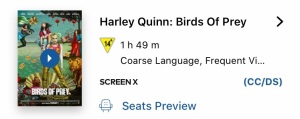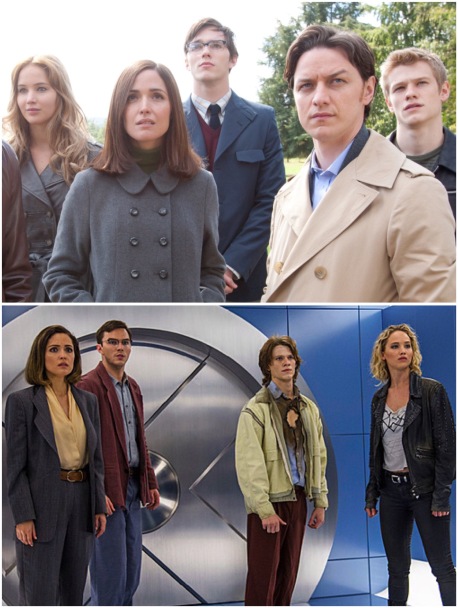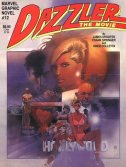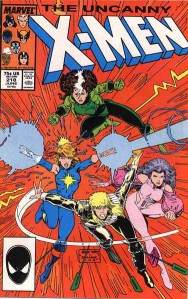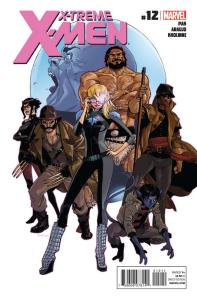 Earlier this month the DC Extended Universe film Birds of Prey opened and took the top slot in the weekend box office, pulling in $33 million, domestically. A respectable take, but one that was certainly less than studio Warner Bros. was hoping for. After all, it was the headlining spinoff film for Harley Quinn – Margot Robbie’s breakout character from 2016’s Suicide Squad (a film that, while critically derided, blew up at the box office, out-grossed the much-higher-profiling Justice League and eventually went on to win AN OSCAR).
Earlier this month the DC Extended Universe film Birds of Prey opened and took the top slot in the weekend box office, pulling in $33 million, domestically. A respectable take, but one that was certainly less than studio Warner Bros. was hoping for. After all, it was the headlining spinoff film for Harley Quinn – Margot Robbie’s breakout character from 2016’s Suicide Squad (a film that, while critically derided, blew up at the box office, out-grossed the much-higher-profiling Justice League and eventually went on to win AN OSCAR).
So the studio heads quickly scrambled to figure out what went wrong and figured maybe they hadn’t marketed the film properly (at which point anyone with even a minor eye towards movie marketing immediately went “Duh”). And that maybe going with the actual, overlong title Birds of Prey: And The Fantabulous Emancipation Of One Harley Quinn was less “fun and kooky” and more the movie title equivalent of burying the lede…and that by going with a title that not only didn’t spotlight the main draw of the film, but was also a property that is little known outside the world of comic fans (and short-lived WB series stans), maybe wasn’t the brightest move. (Side note, Birds of Prey is also a property that one Harley Quinn has never been officially associated with, in any of its comic book iterations, over its 20+ years in existence…until this month, that is).
And also definitely not helping matters was the whimsical poster campaign, especially the Botticelli-inspired series which made Birds of Prey look less like a film about anti-hero Harley Quinn kicking ass with a flurry of femme fatales, and more like a DIY makeover show where an overall-clad Robbie shows you how to do a quick-n-dirty basement reno by tearing out your drywall and getting your friends to deploy some random swatches of material, courtesy of the bargain bin at Joanne’s Fabrics.
So, the solution, ultimately, was to make an immediate, minor, yet significant change to the movie’s title as it appeared in movie theatre listings and ticket-purchasing apps. So that both listing-skimmers and specific searchers of that “new Harley Quinn movie”, would have no question as to what they found when they came across a listing for Harley Quinn: Birds of Prey.
As for how the tactic has worked so far, it’s hard to say. Birds of Prey is currently sitting at a domestic total of $75 million (against an $84 million budget), however, it has been buoyed by an international take of $103 million, for a respectable worldwide total of $179 million, and counting.
The surprising thing I found though, was the swift action that was taken. For this kind of movie-title course correction rarely, if ever, happens during a theatrical run. It’s only after, when the damage has already been done, when lackluster box office is blamed on the marketing, that a push for title change is finally implemented in the home video leg of a film’s campaign.
And to illustrate that, we have two recent examples of films that may have initially fared better, had they followed the quick-action example of Birds of Prey.
Edge of Tomorrow (2014)
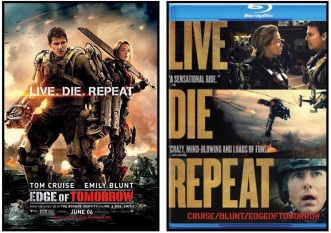 This well-received sci-fi action thriller starring Tom Cruise as a space marine who keeps dying and reliving the same day of battle was saddled with a bland, generic title. Its director kept pushing for the obviously much better Live. Die. Repeat., but the powers-that-be nixed it, keeping it only as the moderately-sized tagline on the movie’s many posters.
This well-received sci-fi action thriller starring Tom Cruise as a space marine who keeps dying and reliving the same day of battle was saddled with a bland, generic title. Its director kept pushing for the obviously much better Live. Die. Repeat., but the powers-that-be nixed it, keeping it only as the moderately-sized tagline on the movie’s many posters.
As the film under-performed, word of the title toss-up conflict became more known, and the general view by anyone with an opinion was “um, yeah – Live. Die. Repeat over Edge Of Tomorrow…obvs”. And wouldn’t you know it, by the time it landed on home video, the former poster tagline pretty much became the whole poster, with “Edge Of Tomorrow“ appearing almost as a footnote after Cruise and Emily Blunt’s credits at the bottom of the copy.
Dark Phoenix (2019)
For the final chapter in the diminishing-returns film franchise that is X-Men, someone involved in the marketing must’ve figured, “Hey – do we actually need to actually put “X-Men” in these titles anymore? I mean, that’s more of an “Avengers” movie thing, right? Sure, we’re not making bank at the box office…but by now doesn’t everyone know that these are the X-Men? And the “Dark Phoenix Saga” is probably the most famous X-Men story arc in comics…even though in the movie continuity, Jean Grey has never really gone by the code name Phoenix, so “Dark Phoenix” might not be the best way to connect the dots for the average movie-goer…but still, wouldn’t it be wicked to just market this one as “Dark Phoenix”? Y’know – be all cool and edgy, and not play up any part of this being the concluding chapter to one of the most era-defining superhero film franchises – one that helped pave the way for the genre itself to become one of the biggest, world-wide, pop culture juggernauts ever?
And the fizzled franchise’s flamed-out finale became the worst performing X-Men film ever.
And while some of that could easily be due to the fact that the film itself was a bit of a muddled mess, nothing was taken for granted when it came time to market the film for home video, as it was blatantly retitled to let everyone know “Hey! Here’s the latest X-MEN movie! It’s called Dark Phoenix, btw”.

